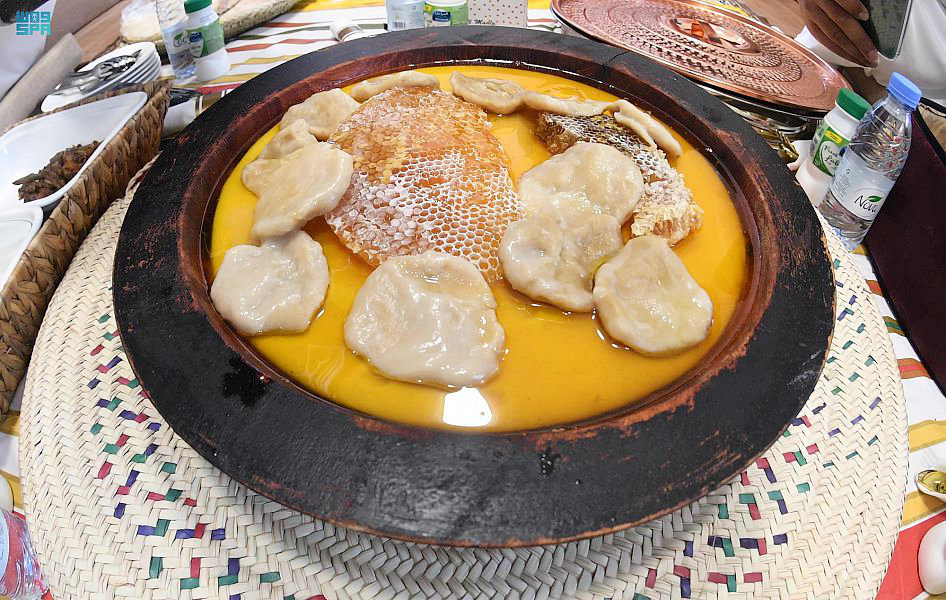JEDDAH: The Saudi Arabia’s Asir region is not only beautiful, with lush, green mountains and plains, but is steeped in rich history, culture, heritage, and food.
Asir’s cuisine is simple, yet rich and flavorful. Since ancient times, the region has welcomed and honored guests by offering highly nutritious food such as such as ghee, honey, wheat, lamb and goat.
Culinary guide Ali Al-Assas, a young chef interested in Asiri culinary arts, said that the dishes are distinguished by their links to the region’s natural wealth.
He praised the Ministry of Culture and the Ministry of Tourism for supporting the region and its food heritage, which motivated him to develop his culinary skills and earn a culinary guide diploma.
One of the most popular Asiri dishes is haneed, which is famous across other Saudi regions as well for its scrumptious taste. It is prepared by putting meat in a muhnath — a traditional oven made by making a hole in earth which is then layered with bundles of sticks, firewood and coal to give the dish a distinct flavor. The meat is then covered by another layer of sticks and a cloth, and the hole sealed for two hours, with salt added later for taste. It is served with rice or bread, and local honey.
Tannour bread, or mifa, is an integral part of Asiri cuisine and is paired with most dishes. It is usually made after dough is fermented for a long period of time.
Al-Radhifa is a calorie-rich meal served for breakfast or dinner. It is prepared with a mixture of ghee, salt, fresh milk and flour.
The region is also famous for Al-Arika and Al-Asseda — two porridge dishes that share similar ingredients and looks but differ in their method of preparation. The former is easier to prepare and makes an ideal breakfast, and consists of a dough that is grilled on a saj (a hot piece of metal), then put on a plate, and ghee and honey poured into its center while dates are placed on its edges. Al-Aseeda is prepared differently as, the flour is cooked by adding water and stirring it until it becomes a dough that is served with broth and meat.
Asiris serve special dishes on important occasions, such as weddings, holidays, and other family gatherings.
One of the special dishes is Al-Tasabi, which consists of milk, flour, and finger-shaped dough. Ghee is poured in the middle and it is served with honey.
Al-Mashghoutha is another dish consumed by people in winter, as it provides the body with energy and warmth. It consists of flour, milk, water, salt, honey, ghee, and is served with dates.
Al-Shadkh and Al-Rajla are dishes that consist of local vegetables cooked together, and eaten with mifa.
Another dish is milla, that consists of meat spread on myrrh branches and then covered by another layer of myrrh and buried in earth for around 3 hours. Salt is added before serving it with rice.
These dishes have acquired great attention among international organizations interested in tourism and heritage, contributing to the nomination of Asir as an international culinary destination.
Asir is set to be awarded the title of World Region of Gastronomy 2024 by the International Institute of Gastronomy, Culture, Arts and Tourism — the first region in a non-European country to be recognized.
The title will be formally awarded by IGCAT’s President Diane Dodd at an official ceremony to be held on Sept. 24 at Terra Madre — Salone del Gusto in Turin.
The accolade is the result of tremendous efforts made by the Saudi Culinary Arts Commission.
The title is usually given to regions that have met a number of criteria, the most important of which are supporting sustainable regional development by providing economic opportunities to young people, and preserving the authenticity of the dishes.














